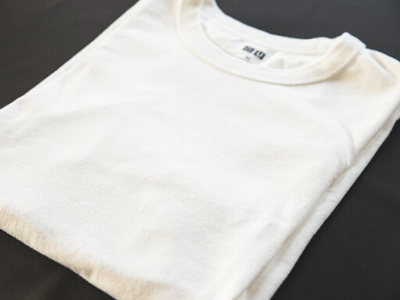No matter how experienced you are with heat press machines, mistakes happen with heat transfer vinyl.
Fortunately, removing heat transfer vinyl, or HTV, from shirts and other materials, isn’t as difficult as you may think.
Learning how to remove HTV from a shirt is a relatively straightforward process. You’ll start by heating the inside of the shirt with your iron.
Then, pull the HTV from the material with tweezers. You may still need to clean up some residue after removing it, but that’s the easiest part of the process.
To help you fix those pesky mistakes, we’ll go over a few simple steps that you can follow to remove any unwanted HTV from your T-shirts, hoodies, and other garments.
What Will You Need to Remove HTV from a Shirt?
For removing vinyl, you’ll need the following supplies:
- A sharp pair of scissors, a penknife, or a razor
- A pair of tweezers
- An electric iron capable of reaching hot temperatures
- Rubbing alcohol
- Petroleum jelly
- Goo Gone, or a similar commercial product designed to remove gooey and sticky adhesive stains and glue residue
Step-by-Step Process for Removing HTV from a Shirt

Step 1: Preheat Your Iron
Assuming you made an error on a cotton or linen material, you’ll want to set your iron to its hottest temperature.
If you’re fixing an HTV mistake on a T-shirt made from mostly synthetic fabrics, you’ll have to choose a lower temperature, as the heat can damage the shirt.
Most irons will have a heating guide near the temperature dial that will tell you how hot it should be for each type of material. If not, check the instruction manual for your specific iron.
Step 2: Use the Iron to Heat the Inside of the Shirt
While this can be somewhat tricky, you need to heat the inner side of the shirt where you made your mistake.
Adding heat directly to the surface of the HTV will only cause it to further fuse to the shirt.
If you’re placing the iron inside of the shirt, you’ll need to be cautious, as this can lead to burns if you’re not careful.
REMEMBER: you need to place the part of the shirt that has the unwanted HTV on it over the heated plate of your iron. Heat the shirt fabric beneath the HTV to make it more pliable. Doing so will make it easier to remove without leaving behind any unwanted adhesive residue.
Step 3: Use Your Tweezers to Pull the HTV from the Shirt
Now that the iron has heated the shirt and hopefully loosened the HTV, you can attempt to peel the mistake from the shirt.
In most cases, pulling steadily and firmly will yield better results than picking at the HTV mistake.
Once the HTV mistake has begun to pull from the outer surface of the shirt, you can remove it with one of the following techniques.
Option A

Using your scissors, penknife, or razor blade, carefully cut across the HTV as you pull it away from the surface of the shirt. Try to cut as close to the edge of the mistake as possible.
In most cases, it works best to start from the top of the unwanted HTV and cut in a downwards motion. This motion can be somewhat tricky, as you may have to tug at the mistake with the hand holding the tweezer while carefully cutting with the hand holding your chosen cutting device.
Continue to heat the inner side of the shirt with your household iron intermittently, as this will make the entire process much easier and ensure that the HTV mistake will be more willing to pull away from the shirt.
If you notice that heat transfer or iron-on vinyl is building on the surface of your scissors or blade, you can apply rubbing alcohol to a clean cloth or paper towel and use that to wipe it away.
KEEP IN MIND that you should use caution when handling sharp objects to avoid cutting yourself.
Option B

If you tried to cut away at the HTV design and are still struggling to remove it all, you can turn to a chemical solvent.
WARNING: Chemical solvents have the potential to damage the fabric if used incorrectly.
Goo Gone, or any similar product like acetone, adhesive remover, or nail polish remover, will help loosen excess HTV residue from the shirt. These chemical solvents disrupt the bond between the HTV and the fabric.
Before you apply Goo Gone or any similar product, you should wait for the shirt to cool down, as the combination of heat and these types of residue solvents can lead to stains.
Option C

If you don’t have access to Goo Gone or a comparable alternative, you can try using petroleum jelly, which loosens the bond between the heat transfer vinyl and the fabric.
Using a consistent and circular motion to rub the petroleum jelly into the HTV can cause it to clump up and loosen. Once this occurs, rinse the shirt in very hot water with a mild laundry detergent.
Just like the previous option, this can damage the shirt, so you should practice extreme caution, especially if it’s a shirt you plan on selling to a paying customer.
Step 4: Clean Up the Area and Remove Any Leftover Residue
Now that you’ve removed the bulk of the HTV mistake, you can begin to clean up any evidence that the stain was ever there.
In most cases, this involves simply combing over the area with your tweezer to pick away any small dots of HTV that remain.
If you used either of the chemical options to remove the HTV mistake, you must wash the shirt. Use a very mild laundry detergent, and make sure that you turn the shirt inside out before placing it in the washing machine.
If you plan to sell the shirt and don’t want to wash it, you can spot wash the specific segment where the mistake was using a mild detergent and warm water.
If you need to re-press your design on the shirt, you should wait at least 12 hours to ensure that it’s dry before you place it into your heat press.
You should also avoid using a machine dryer, as allowing the shirt to air dry will reduce the chances of any evidence of a mistake.
Final Words
By now, you should know how to remove HTV from a shirt in a few simple steps.
When done properly, this step-by-step process should allow you to correct your mistake without damaging the shirt in any noticeable way.
As with anything, practice is important, so don’t get too discouraged if you make mistakes and struggle to remove HTV stains the first few times you try.
